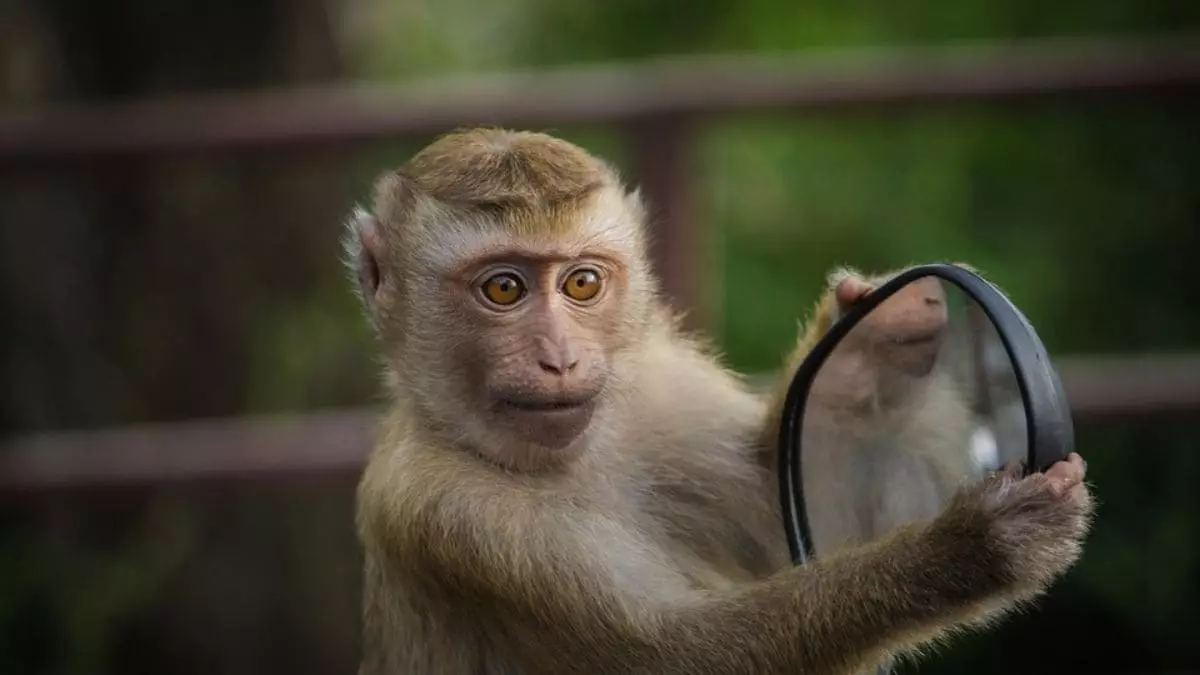The question of self-awareness in animals has long fascinated researchers, particularly regarding how various species interpret their existence in relation to their environment. Unique in their social structures and behaviors, baboons present an interesting case study. Recent investigations conducted in Namibia suggest that these primates may not possess the same level of self-recognition that has been observed in other intelligent species. While self-awareness is often celebrated as a hallmark of cognitive complexity, the findings challenge our understanding of this trait and its necessity in the survival of certain animal populations.
The research in question, published in the *Proceedings of the Royal Society B: Biological Sciences*, centered on observance of two troops of chacma baboons (Papio ursinus). Over five months, large mirrors were placed near their regular watering holes, a common area for social interaction. During their routine exploration of these mirrors, researchers used a laser pointer to create a dot on the baboons’ faces and assess their reactions. The underlying goal was to measure if the baboons could make the connection between their reflections and the marks on their bodies.
This innovative approach yielded intriguing results. Unlike other species that have demonstrated an ability to engage in self-reflection, the baboons did not show significant reactions to the marks placed on their faces. Though they were notably interactive with the mirror environment, their behavior indicated a lack of self-recognition. This pattern diverges sharply from other primates, such as chimpanzees and orangutans, that often display evident signs of self-awareness when subjected to similar tests.
A critical observation from the study involved the baboons’ responses to visible markers versus the laser pointer. When the researchers placed laser dots on their arms or legs, a considerable portion—about 64%—of the 91 baboons tested showed awareness by touching the marked areas. However, when the laser was redirected onto their cheeks or ears, only one out of the 51 observing baboons responded. This disparity suggests a disconnect between the baboons’ understanding of their reflections and their physical selves, ultimately leading researchers to question whether the primates interpreted the dot as part of their own identity.
Several experts contributed insights to the study’s findings, emphasizing the nuances in assessing self-awareness. Alecia Carter, an evolutionary anthropologist, underscored the complexity of self-recognition among species. The mark test, widely used to analyze self-awareness in various animals, has historically yielded mixed results. It appears that self-awareness may not be an innate trait but rather one hinging on experiential learning—a hypothesis supported by the observation that not all species have similar cognitive capabilities.
The implications of this research extend beyond the baboons themselves. It highlights the possibility that self-awareness is not universally essential for species survival. Baboons thrive in their environments, exhibiting social behaviors and problem-solving skills necessary for their existence without needing to recognize their reflections. This raises vital questions about the evolution of cognition and whether self-recognition acts as a vital adaptation for survival or merely a cognitive luxury that not all species require.
The research also invites a broader conversation about the nature of self-awareness. Psychologist Lindsay Murray notes that human self-awareness typically develops over time. A significant portion of children do not pass the mirror test until they reach two years of age, suggesting that recognition is a gradual process rather than a binary characteristic. This continuum perspective of self-awareness may prompt scientists to reconsider the benchmarks used to measure cognitive function across species.
The study of baboons and their interactions with mirrors has unveiled critical insights into the understanding of self-awareness in non-human primates. While these findings do not diminish the complexity of baboons’ social interactions and intelligence, they invite us to challenge existing notions about the necessity of self-recognition. It is crucial to recognize that cognitive traits like self-awareness may vary widely across species, impacting how animals relate to their worlds. Addressing these complexities will ultimately deepen our understanding of animal intelligence and the evolutionary processes that shape it.

